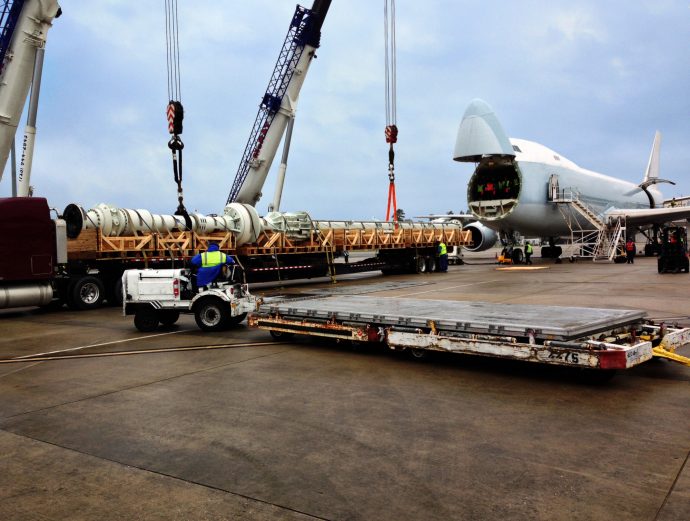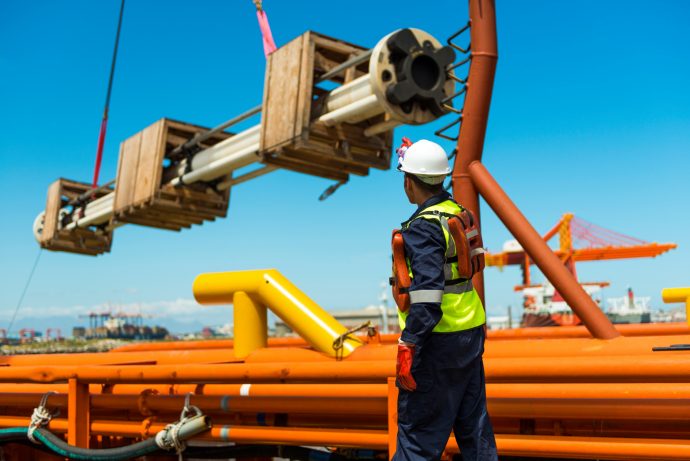Despite the accelerating pace of transition to renewable energy, global demand for power is growing faster. And that is prompting a resurgence of fossil fuel projects which bring a host of infrastructural and logistical challenges.
Renewed Demand
According to the International Energy Agency (IEA), demand for fossil fuels is set to peak in 2030. Its January 2024 Oil Market Report
states that global oil supply is forecast to rise by 1.5 mb/d to a new high of 103.5 mb/d in 2024. While global growth in electricity demand eased slightly to 2.2% in 2023 due to falling electricity consumption in advanced economies, it is projected to accelerate to an average of 3.4% from 2024 through 2026.

The OPEC 2023 World Oil Outlook reported that global oil demand is set to reach 116 million barrels per day (bpd) by 2045, roughly 6 million more barrels per day than it predicted the previous year. It will take more than USD 14 trillion of investment to meet that demand.
New rush
The transitional paradox is being felt especially keenly in the Middle East, the source of more than one-third of the world’s oil and gas. At the same time that countries throughout the region are exploring the potential of alternative, sustainable energy sources, they face renewed demand for oil & gas – especially offshore.
When the pandemic slammed the brakes on global travel, oil demand nosedived by almost a third, and countless offshore rigs were stacked.
“Concerns about global energy security are driving an unprecedented boom in installations and operations,” says Gopalakrishnan Srinivasan, GAC Group’s General Manager for Special Projects - Energy. “The stacking of rigs we saw when demand slumped during the pandemic is a thing of the past. Now, every platform, vessel and crew is back in action, riding the wave of resurgent fossil fuel demand.”
Major projects
The infrastructure needed for such projects is increasingly large and complex, and it needs reliable partners to provide support. As a leading and experienced provider of shipping, logistics and marine energy services in the Middle East, GAC is seeing an increased demand for its services to the offshore & gas sector.

For more than 60 years, it has supported the Middle East’s oil & gas (O&G) sector with rig moves, project logistics, end-to-end supply chain and purchase order management, warehousing facilities and handling of spares.
Off the coast of Qatar, GAC has helped to support the development of the North Field Expansion project, which includes the installation of jackets, topsides and more than 550 km of underwater pipe laying to produce more than 1.4 million bpd by 2025. GAC Qatar acts as the agent for almost a dozen rigs at the Al Shaheen Oil Field and is now the leading ship agent for LNG vessels calling at Qatar as export numbers continue to rise.
The company is also supporting a USD 20 million pipelaying project in Abu Dhabi in the United Arab Emirates.
In Saudi Arabia, GAC acted as the official service provider for Sleipnir, the world’s largest semi-submersible crane vessel that has been used at a number of offshore O&G projects, including the Marjan Oil and Gas Field, which is undergoing a major expansion project to boost its production capacity to 800,000 bpd.
Reliable support
The greater size, scale and complexity of offshore O&G infrastructure projects call for reliable third-party support services - including heavy-lift, logistics and crew support - to keep them on time and within budget.

Energy projects, whether for fossil fuels or renewables, need strategically located yard and storage facilities to accommodate the enormous components involved. Ensuring that all the right parts and people are in the right place at the right time is a 24-hour operation and offshore players need reliable partners with the necessary infrastructure and expertise to help carry that burden.
“GAC is well-placed to meet that demand with our existing facilities and the ability to quickly set-up and operate new supply bases when and where required,” says Gopalakrishnan. “We understand the importance of growing in-line with our customers and their projects to provide sufficient and cost-effective support services.
“There are also the intricacies of loading and unloading vessels, storage, truck loading and final delivery – all in line with local regulations that can differ from one location to another.”
A project that GAC undertook in 2023 for a UAE-based customer demonstrates that complexity. GAC was entrusted with the transportation of multiple out-of-gauge structures each valued at USD 4 million. Due to the size of the trucks and their cargo, they had to liaise with the local electricity company to disconnect and reconnect overhead power lines along the route, and a special police escort was arranged for the move, which took place overnight to reduce the impact on the public.

Completing the puzzle
Growing demand for energy means greater reliance on major infrastructure projects, whose size, scale and complexity of presents a series of challenges that project managers must tackle, in particular during times of instability.
It’s a complex puzzle that will require all the pieces - including third-party contractors, support service providers and a robust import-export market to fit seamlessly together for the Middle East oil & gas sector to continue to thrive.